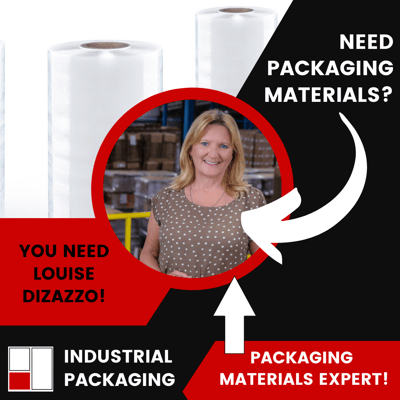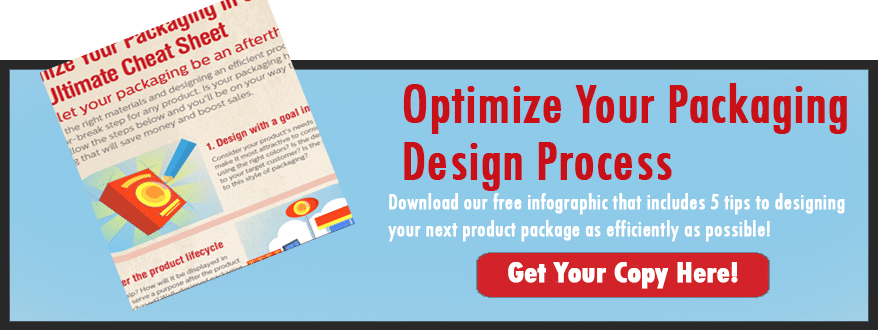Exploring Primary Packaging Materials
When entering any market with a new physical product, one of the essential elements of a successful launch is your product packaging.
Your packaging can make or break the success of your goods. And while at first glance it might be tempting to think that product packaging will be a simple or easy aspect of your business, you would be wrong.
Whether you plan to do all of your packaging in-house or outsource through a contract packaging vendor, it is vital to understand all the different types of packaging that go into a well-packaged product.
Now, you might not realize it, but many of the products you buy feature several different types of packaging simultaneously.
First and foremost, you have to consider your primary and secondary packaging needs. This includes not only the required machinery but also the appropriate packaging materials.
You understand this to an extent. But, you want to understand better what primary packaging materials are and which ones are best for your needs.
You want to make sure that you choose the best primary packaging materials for your brand so that you can protect your customers and products, all while driving better sales.
Today, we will provide an in-depth description of primary packaging materials and explore some of the most popular varieties available.
After reading this article, you will have everything you need to find the proper primary packaging materials for your people, products, and brand.
What Is Primary Packaging Material?
Primary packaging materials are the packaging supplies that are in direct contact with your product itself.
Primary packaging material is sometimes called a "consumer unit. This layer of packaging is the first layer of material that contains the finished product.
Common primary packaging materials include items such as flexible pouches, glass bottles, paperboard boxes, and blister packs.

What Are The Most Popular Primary Packaging Materials?
When it comes to choosing a primary packaging material for your products, there are dozens of options to choose from.
But, you don't just want to choose a primary packaging material all willy-nilly. This can result in poor packaging, safety hazards, wrap-rage, and other negative experiences that can lead to a terrible unboxing experience for your customers.
So, How do you choose the suitable primary packaging materials? What are the most popular choices available today?
Below, we will review some of the most popular primary packaging materials. We will also explore the proper applications for these packaging supplies.
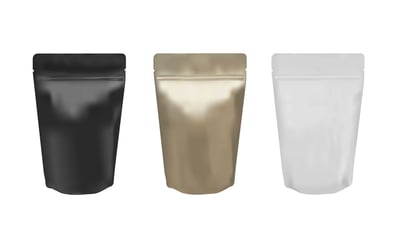
1. Flexible Pouches
Flexible pouches are one of the most popular primary packaging materials on the market. They have been surging in popularity with brands and consumers alike for the past decade and continue to do so today.
But, what is the reason for this? Why have flexible pouches become so popular? Why are they quickly replacing rigid packaging on store shelves across the globe? And, why are these pouches so popular with consumers?
The reasons are many.
First of all, flexible pouches cost less than most of the most popular packaging material alternatives on the market today.
They are also significantly less costly to ship than glass, metal, cardboard, or paperboard packaging materials.
And they have a significantly lower carbon footprint than all of the materials mentioned above. This makes flexible pouches one of the most earth-friendly packaging materials currently available.
Additionally, they often feature easy-open and reseal capabilities that other packaging supplies do not. Plus, unlike glass, they will not shatter when dropped and therefore are a much safer alternative to glass packaging.
Flexible pouches also may feature clear, see-through windows, which allow the customer to visually inspect the product before making a purchase.
And, they can also be augmented with package valves which allow the consumer to smell the products before they buy. This has made them extremely popular for packaging coffee, tea, and other food products boasting a pleasant scent.
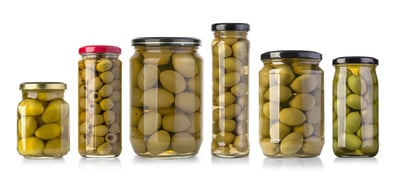
2. Glass Containers
Glass containers have been popular packaging materials for over one hundred years. A staple of the food packaging industry, they are very popular with consumers.
They are often used for packaging products such as vegetables, soups, tea, coffee, energy drinks, and other food products.
Glass jars and bottles can be found in various retail settings, including supermarkets, food marts, gas stations, country stores, mom-and-pop shops, food trucks, breweries, distilleries, and other food and beverage product retailers.
Glass is popular with consumers as it allows buyers to visually inspect the product before buying the item.
Glass is also often perceived as fancy, making it one of the world's most sought-after luxury packaging materials.
And, glass is 100% recyclable, which has made it very popular with consumers. With that being said, glass is not necessarily the most earth-friendly option. This is because glass boasts one of the highest carbon footprints of all packaging materials.
Need help designing your packaging?
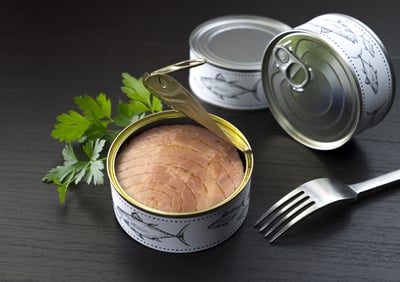
3. Metal Cans
Metal cans are more than a little ubiquitous in the beverage industry. In fact, they downright dominate various niche markets such as craft beer.
As such it should come as no surprise that you will mostly see aluminum cans used for the packaging of beverages.
When it comes to tin cans, these are primarily used for packaging food products such as soup. However, metal cans are also used for non-food products such as paint.
You can find metal cans in many different types of retail institutions, including supermarkets, home improvement stores, department stores, hardware stores, food marts, gas stations, food trucks, and many other consumer goods retailers.
Metal cans are popular with consumers for many reasons. When it comes to beverage applications, they are easy to open and keep your drink of choice cold for a longer period of time after opening when compared to plastic containers.
Additionally, not only are they recyclable, but some types of metal cans (aluminum beverage cans in particular) can (in some states) be traded in at redemption centers for five cents per can.
Now, while most metal cans are fully recyclable, they come with a much bigger carbon footprint than many alternative packaging materials.
Furthermore, while they are recyclable, they will not be recycled in single-stream recycling unless they are thoroughly cleaned of contaminants, adhesives, and labels.
Failure to remove these items from the cans will result in these containers ending up in the landfill, where they take up much more space than flexible packaging alternatives.
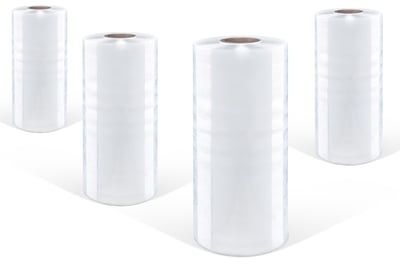
4. Shrink Film
Shrink film is one of the most popular packaging materials in the world. Used for countless applications in consumer goods and food packaging, shrink film is almost impossible to ignore in modern life.
Shrink film comes in various lengths, widths, and gauges. As for which type of shrink film is appropriate for your products, that will largely be determined by that application you are using it for.
As an example of shrink film in the context of primary packaging, you will often find shrink films as the primary packaging material for frozen pizzas and pies. These will usually boast a secondary packaging material such as a paperboard box.
Shrink films are popular with consumers due to their low shipping costs, low purchase price, environmental friendliness, and ease of removal.
Some traditional plastic shrink films are recyclable. Some are not. Those formulations which are recyclable are not generally accepted in single-stream recycling centers.
However, despite these complications, which often lead to shrink films ending up in a landfill, they have one of the lowest carbon footprints of any packaging material and take up much less space in a dump than many other packaging supplies.
With that being said, there are also biodegradable and plant-based shrink films currently available. But, due to global supply chain issues, these may be harder to source while also boasting extensive lead times.
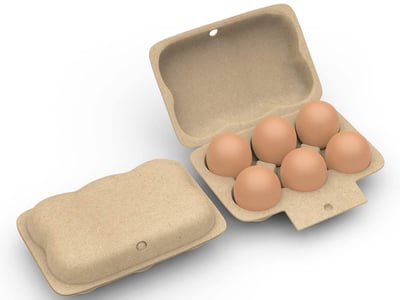
5. Paperboard Containers
Coming in at number five, we come to paperboard containers. These types of rigid packaging supplies are very popular for both consumer goods and food packaging applications.
Common uses for paperboard containers include the packaging of ice cream, milk, cream, and other dairy products, foods, and beverages.
You can find paperboard boxes in supermarkets, food marts, gas stations, department stores, country stores, and many other retail locations.
Paperboard containers are popular with consumers because they are recyclable and relatively easy to open.
But, paperboard containers will not be recycled in single-stream recycling centers if they are contaminated with food particles, liquids, grease, adhesives, or labels.
Finally, they feature a higher carbon footprint than many flexible packaging alternatives in addition to being more costly to ship.
Which Primary Packaging Materials Are Right For You?
After reading this article, you should better understand what a primary packaging material is. You should also know what some of the most popular primary packaging supplies are.
But, you are probably wondering, which type of primary packaging is right for my products? Would you like to identify the proper primary packaging supplies for your product packaging needs?
If you answered yes, then we would advise you to consider reaching out to one of our packaging specialists.
They will be able to help you choose the correct type of primary packaging materials for your specific packaging requirements.
About Nathan Dube
As the Digital Marketing Specialist at Industrial Packaging, I am honored to create content for such a phenomenal company and work with one of the greatest teams in the Packaging Industry. Whether creating a video, writing blog posts or generating other pieces of content and multimedia, I am always excited to help educate and inspire our prospects and clients to reach their highest potential in regards to their packaging processes and needs.




